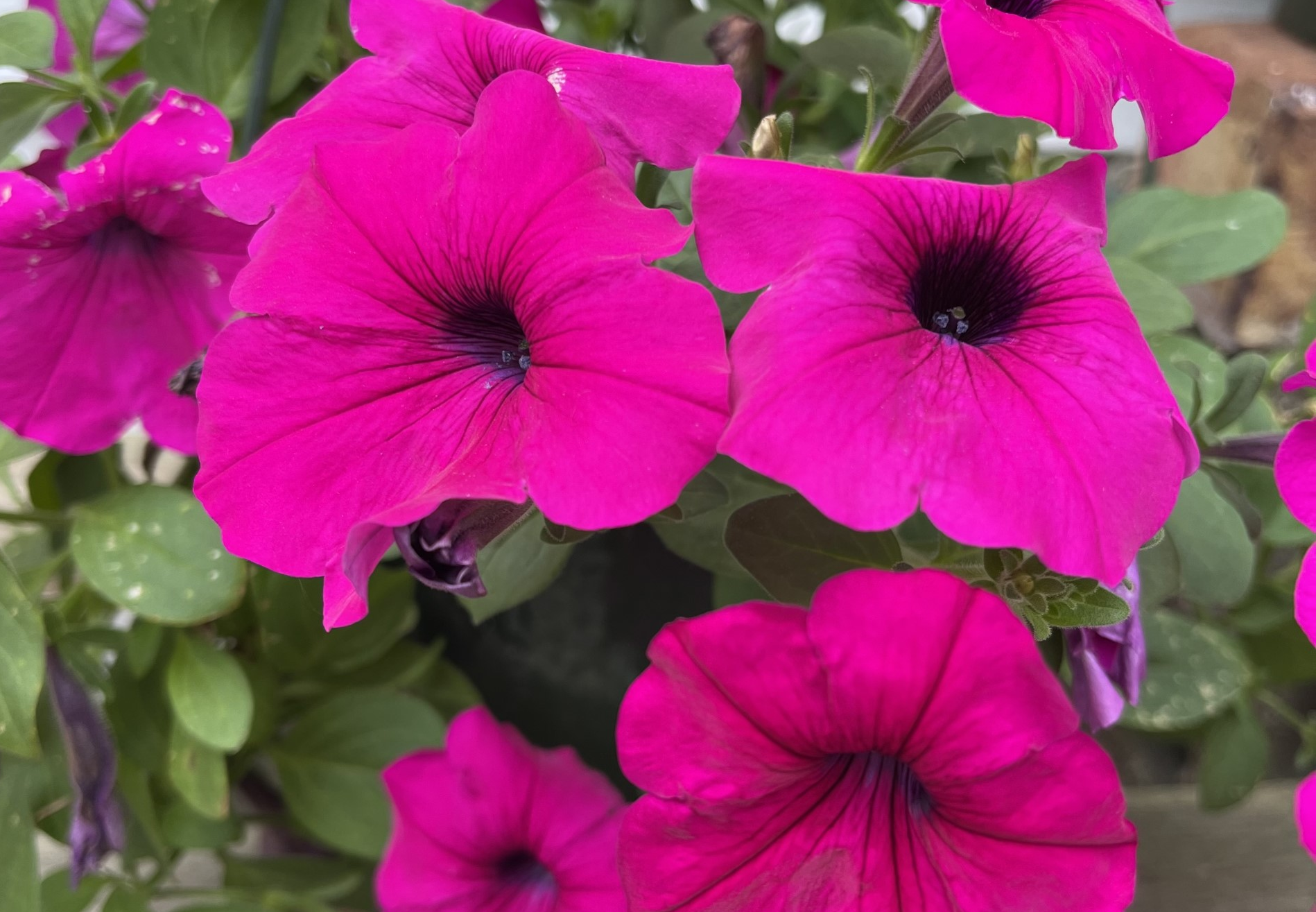The Hort Report: Best times to water gardens and flowerbeds, and how to prune petunias

The weather has not changed much over the past several days and weeks. Some of you are getting much-needed rain, and others of you aren’t. You need to realize we are now starting the real days of summer. I have had a few more people ask me about tips on how to water their gardens and flowerbeds.
The first thing is to know what the best times of the day are to water.
Early in the morning between 4 and 9 a.m. are the best times to water if you can. The next best times to water are in the late afternoon or early evening. Try not to water at twilight or at dark. If watering after dark, you might cause fungus or other diseases to form and start to attack your garden plants.
I like to water at the base of plants. This way you can make sure to get the water down into the roots faster. When you are watering leaves, the plant will absorb the water from the leaves, but depending on the time of the watering, sometimes the sun might evaporate the water on the leaves. If watering after dark, the water might start to help fungus and disease to grow.
Using a soaker hose is a great way of watering plants. I know Laura and I have used them in the past in our perennial flowerbeds. Turn the soaker hose on and leave it. Most soaker hoses have all the holes on them facing one way. The best way we like to use them is to place the side with the holes into the soil, forcing all the water into the soil. We will only us them a couple of times a week, leaving the soaker hose on for 30 -40 minutes at a time.
It is better to water deep each time you water while not watering as often. This will help make sure the soil in and around the roots is soaked up with plenty of water. This will allow the roots to have plenty of water around them, helping the plants grow and produce plenty of produce.
When watering more often, you are not helping the roots go down deeper. If you water daily, the water is in the top part of the soil and the roots don’t need to go down far to get water because the water is near the top of the soil. Shallow watering doesn’t do as much good as a deep soaking watering.
If you have a shallow root system in plants, a strong wind could cause your plants to be pulled out of the ground.
Sometimes you can build water traps in and around your plants. Laura and I do this with our tomatoes, muskmelons, pumpkins, water melons and pole beans.
This is simple to do. We plant our tomatoes in groups of three in a triangle layout within a few inches of each other. We have a hole dug down in the soil in the middle of the triangle. This is where we water and put the liquid fertilizer. Using a water hole in the middle of the triangle helps keep the water and fertilizer there longer for the tomato plants to use it.
I plant the melons and pumpkins in hills. Building a molt around the hill allows the water and fertilizer to stay longer, and the roots will grow towards the molt.
I plant the pole beans in a circle using tomato cages for them to grow up. I will make a hole in the soil in the middle of the tomato cage, watering and fertilizing there.
I also will mulch around all the plants except the sweet corn. Mulching and using the water traps helps conserve the water and fertilizer I apply, helping the plants get the most out of water and fertilizer.
Whenever we can, we like to have mulch around in our perennial flowerbeds. This helps with the control of weeds and conserves water, too.
In places I haven’t mulched, I keep all the weeds pulled and the ground hoed. By keeping all weeds down, you are making more water and nutrients available for your plants.
Having a good soil mix can help you get the most out of your watering. If you think water is not staying in your garden soil or your plants roots don’t grow like they should, think about adding organic matter and other amendments to your soil. This needs to be done in the fall once the growing season is over for the year. This will help your garden and flowerbed soil in several ways.
Someone asked me the other day about pruning leggy petunias as they stop producing flowers. During this hot dry time of the summer, many flowering plants will start producing fewer flowers. Prune your petunias back about half of their length. This will help the petunia start to grow new leaves and flowers to replace the parts you have removed.
Water the petunia plant soaking it deeply, allowing the petunia plant roots to be surrounded by water. A day later, make sure the soil is still moist. I will use water soluble fertilizer. I use Ferti-Lome Bloom & Root Fertilizer, which has a 9-58-8 N-P-K ratio. It has a large amount of phosphate in it. Phosphate helps with the female parts of the plant, helping build up roots and flowers. This is the best type of fertilizer to get your petunia plant start blooming again.
You can also use a water soluble balanced general purpose fertilizer like 20-20-20 to help get new leaves and flower growth too.
Finally, remove old, dead and faded blooms from your petunia plant. This is called deadheading. Doing this lets the nutrients go directly to new leaves and flower growth.
I really appreciate all your questions in the past and look forward to them in the future. Thank you and please keep them coming. Your questions help me learn more, too. Looking up answers to questions helps me in the classes I teach.
If you have a question, call me at Shelby County Implement at 573-588-2040. Better yet, come out and see me. I really enjoy having people stop me when they see me. You can also email me at sci63468@hotmail.com to send me pictures of your problems. Please keep your questions coming.

Pat Greenwell is the owner of Shelby County Implement in Shelbina, Mo. He was a high school agriculture teacher for 11 years. He has taught adult vocational agriculture since 1987. He also is a research assistant at the Truman State University Ag Department Farm.
Miss Clipping Out Stories to Save for Later?
Click the Purchase Story button below to order a print of this story. We will print it for you on matte photo paper to keep forever.

